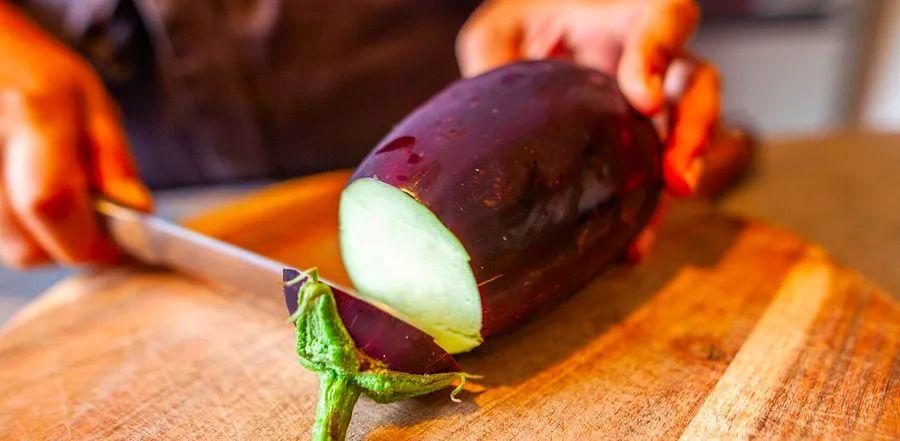The Secret to Restaurant-Quality Eggplant at Home

Eggplant is available all year round, but it truly shines when it's in season. Farmers' markets are brimming with it, tempting me to take some home. As fall settles in here in the Northeast, I’m craving rich, cheesy eggplant Parmesan or a comforting plate of moussaka. As I open the windows to let in the crisp evening air and prepare my fresh haul, I can’t help but think back to my restaurant days and recall the crucial step that makes eggplant dishes shine.
Restaurants have mastered vegetables like asparagus, green beans, mushrooms, and Brussels sprouts—so it’s no surprise that we look to the pros for the best eggplant tips. And the key ingredient? Salt.
Why Salting Eggplant Before Cooking Makes All the Difference
I’ve mentally erased many moments from my time in restaurant kitchens (if you know, you know), but one lesson has stuck with me: salting eggplant—whether sliced or diced—and allowing it to rest is the best way to prepare this beloved nightshade.
Eggplant Has Evolved Beyond Its Bitter Origins
Eggplant has come a long way from its bitter beginnings. Much like Brussels sprouts, it has been selectively bred over the years to become more enjoyable for a wider audience. While salting is no longer needed to counteract the bitterness of older varieties, it remains an essential step for enhancing both flavor and texture. Just like my preferred method for prepping zucchini, salting eggplant helps draw out excess moisture, making the flavor more vibrant. Yes, it takes some extra time, but the results are definitely worth it for a top-notch finished dish.
The Science Behind Why Salting Eggplant Works
Why does it work so well? It’s all about science. Eggplant contains over 90 percent water, and salting it helps reduce the sponginess by drawing out moisture through osmosis. The result? A firmer texture that cooks more evenly. This method also cuts down on oil absorption, so the eggplant won’t get greasy, and it helps achieve a better, more even browning when cooked.
- Cut or slice the eggplant into the desired shape and thickness and lay it out on a paper-towel-lined sheet pan, or even in a colander over a bowl to drain.
- Generously sprinkle salt evenly overtop (I use kosher).
- Let it sit for a bit! A minimum of 15 minutes works, up to 1 or 2 hours. I usually allow at least 30 minutes for this step. Some people may prefer to rinse the eggplant after the salt soak, but I skip that and make sure to account for the added salt later in the dish instead.
- Pat the eggplant dry with paper towels—as dry as you can get it.
- Continue with your recipe of choice. However you are preparing the eggplant, it will be ready to shine.

Dinogo
Chef’s Tip
The eggplant will become delightfully creamy and tender on the inside while achieving a perfectly crispy crust on the outside.
If your eggplant is particularly bitter, try adding sugar as well. A 1:1 mix of salt and sugar works similarly to salt alone but adds a sweet balance. This is especially helpful in stir-fries, where you’re aiming for a harmonious sweet-sour flavor combination.
To recreate my favorite version of eggplant Parmesan from a local restaurant, I always slice the eggplant very thin—about 1/8 to 1/4 inch thick—before breading and frying. It takes hours to prepare this way, but the result is a stack of crispy, light, and mouthwatering layers that my family insists on for special occasions.

Eggplant Recipes to Try Using This Method
Now that I’ve hopefully convinced you that salting your eggplant is worth the time and effort (and the extra paper towels), here are some recipes to try out this season:
- Italian Eggplant Parmigiana
- Grilled Eggplant Rollups
- Authentic Greek Moussaka
- Easy Fried Eggplant
- Grilled Eggplant with Balsamic Vinegar Relish
- Chinese Eggplant with Tofu and Thai Basil
- Stuffed Eggplant Parmesan Rolls

1

2

3

4

5
Evaluation :
5/5